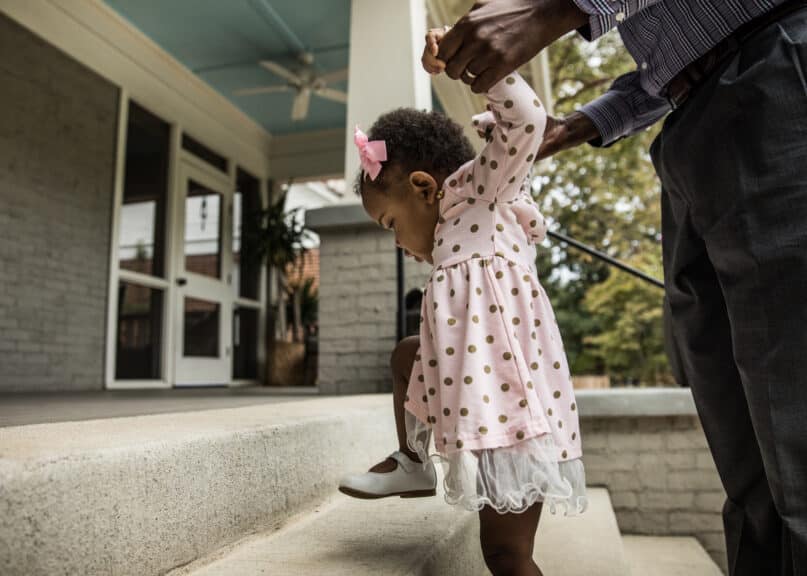Have you ever played red light, green light with a group of kids? I love playing this game! During COVID-19 however, I feel like somebody keeps shouting “red light”, “red light”, “red light!”
I’m ready to move, and I’m waiting for a green light. And then I hear the words “red light” again. Like many of you, trying to navigate ministry right now has not only been hard, but also frustrating. We need encouragement.
I want the best for kids and their families, and what I thought might be a three- or four-week interruption, turned into a four-month jog. Now, it’s a no-end-in-sight marathon. So, brace yourself and get your sneakers on.
Let me be honest, I have been tired—mentally tired and emotionally drained at times.
We made an assumption that we would have to be online for at least six months.
So, what did we have to do to recalibrate our minds and souls to help our ministry move forward? We set goals—lots of short- and mid-range goals to help us have the stamina to get through this. It’s important to invest in our ministries now.
Making Goals

To help us accomplish this, we made an assumption that we would have to be teaching online for at least six months. This helped us look at the goal differently. Instead of looking at this as an interruption, we looked at our ministry differently.
If we could only be online in the future, what would families need from us?
Would early childhood families need the same from us as our elementary school families?
Did we need to break up the ministry and build out what families need based on what we were hearing and experiencing?
Is our target still the people who would come to our physical campus, or have we shifted? Can we have a wider reach now?
Here are four things we did once we started looking at our ministry differently:
1. Listen
We got a group of parents together to listen to them.
One size doesn’t fit all
What were they experiencing? What did they need the most from our church in this season? What worked for them when we sent resources to them? What didn’t work? What could we do differently?
We did two separate focus groups—because we know one size doesn’t fit all. The groups were based on the age and stage of their children, as well as their family make-up and demographics. And families need us to come alongside them in this time.
2. Start Over

Although we were already providing online resources for families and resources to use at home, we pretended nothing worked and started over as if we needed to respond to what we heard.
Always respond to what you’re hearing from your families.
3. Focus on What You Can Do Well
We realize that we couldn’t do it all, but we could do something well. We started there and came up with three areas to focus on: parental support, community, and content (Bible teaching).
We were reminded that the church is made up of the people who love Jesus, not the building we assemble at.
Let me unpack this for you.
Parental Support
We started providing webinars and booked some sought after speakers that we hosted through these webinars.
Not only were we providing great content, but parents could watch after they put their kids to bed in the comfort of their own home. The overhead costs were low, and this was huge for parents who were desperate for help.
It hit multiple felt needs at the time.
Community
Parents are looking for community for themselves and their families—especially right now. Let’s remember that the church is made up of the people who love Jesus, not the building we assemble at.
So, we started to look for safe ways to allow for socially distanced opportunities for people to connect.
We invested heavily in our kids’ leaders and provided a lot of Dollar Tree supplies for them to pack goody bags and deliver them to the kids in their classes. We hosted events like chalk-the-lot, where we spread families out across the parking lot, so they were never too close to others but were enjoying the same event.
For our elementary aged ministry, we moved to a Zoom-hosted experience where we would segment kids out into Zoom breakout rooms by grade.
Content
We started the pandemic by pivoting from the curriculum we were using to one that was delivered online with video teaching as part of the weekly offer. We were posting this video curriculum online.
This worked in the beginning, but we were premiering our curriculum on Sundays. We quickly realized that families with preschoolers couldn’t really supervise their younger children while they were trying to watch the Sunday service themselves. So, we moved our early childhood resources to an on-demand model to work with any family’s schedule.

Families had way more time on their hands now and parents needed more options. For elementary aged children, we moved to using Zoom-hosted experiences complete with large group experience and small group breakouts every Sunday.
This works for us because our kids use Zoom for school and are able to navigate the platform since it is what they use at their schools.
Ministry for the One
In Luke 15, when Jesus talks about the lost sheep, it completely inspired us and our thinking during this time. We reframed our questions around the one.
If we focus on how we reach one more, we can make a real difference. Because as we are called to ministry, it is not about a program we have done for years. Facing the unknown has created opportunities for us to be reminded that our methods can change if we keep the great commission that Christ gave us in the center:
Go out into all the world and make disciples of all nations.
So, take a breath, think about what you might need to do to step back and help the families in your community. And move forward one step at a time.

13 Very Famous Friends and How Jesus Loved Them

13 Very Famous Friends and How Jesus Loved Them









